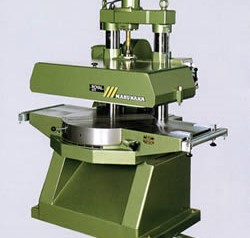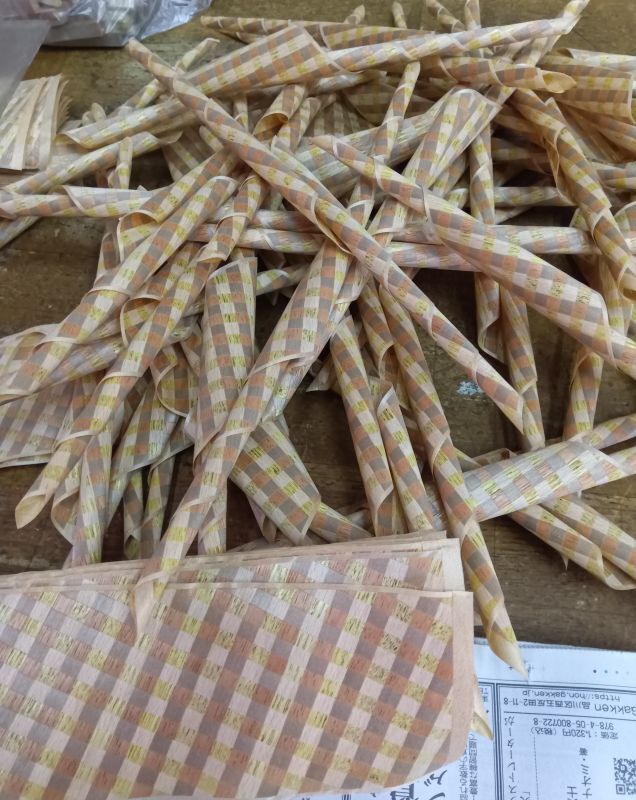Zuku
I sliced the yosegi used for the side panels of Japanese puzzle box. This pattern is called "Ichimatsu". that's the one of most standard wood mosaic pattern. When woodworking machines were not yet widespread (a long time ago), this process was carried out by craftsmen who sliced the wood by hand using a planer, one of the Japanese carpentry tools. but now we do this slice process with the machines of slicer (photo). So it's very accurate and fast (than by hand). We can slice about 200 - 300 slices in about an hour with this machine. This state of thin sheets is called "zuku" in the term of yosegi craftsmen.
and The thickness of the sliced yosegi sheets is 0.1 mm to 0.2 mm. Sliced sheets, by their nature, curl up (photo). we have to extend these. There are two ways. One method is to sandwich it between boards etc. and put a weight on it and leave it for several days. Even if it is thinned, the sheet contains moisture of wood, so over time it will straighten out. However, this method takes time and is a little difficult because the force of the sheet curling is strong.
The other method is to stretch each piece one by one using a special clothes iron. When wood is heated, it deforms. Using its properties, press and stretch it with the clothes iron. but This method also requires experience. This is because the heat will melt the glue that makes up the yosegi. And that will dry out the sheet and cause the pattern to fall apart. Therefore, skillful skill is required in determining the temperature of the heat and the time to apply the heat.
and The thickness of the sliced yosegi sheets is 0.1 mm to 0.2 mm. Sliced sheets, by their nature, curl up (photo). we have to extend these. There are two ways. One method is to sandwich it between boards etc. and put a weight on it and leave it for several days. Even if it is thinned, the sheet contains moisture of wood, so over time it will straighten out. However, this method takes time and is a little difficult because the force of the sheet curling is strong.
The other method is to stretch each piece one by one using a special clothes iron. When wood is heated, it deforms. Using its properties, press and stretch it with the clothes iron. but This method also requires experience. This is because the heat will melt the glue that makes up the yosegi. And that will dry out the sheet and cause the pattern to fall apart. Therefore, skillful skill is required in determining the temperature of the heat and the time to apply the heat.

